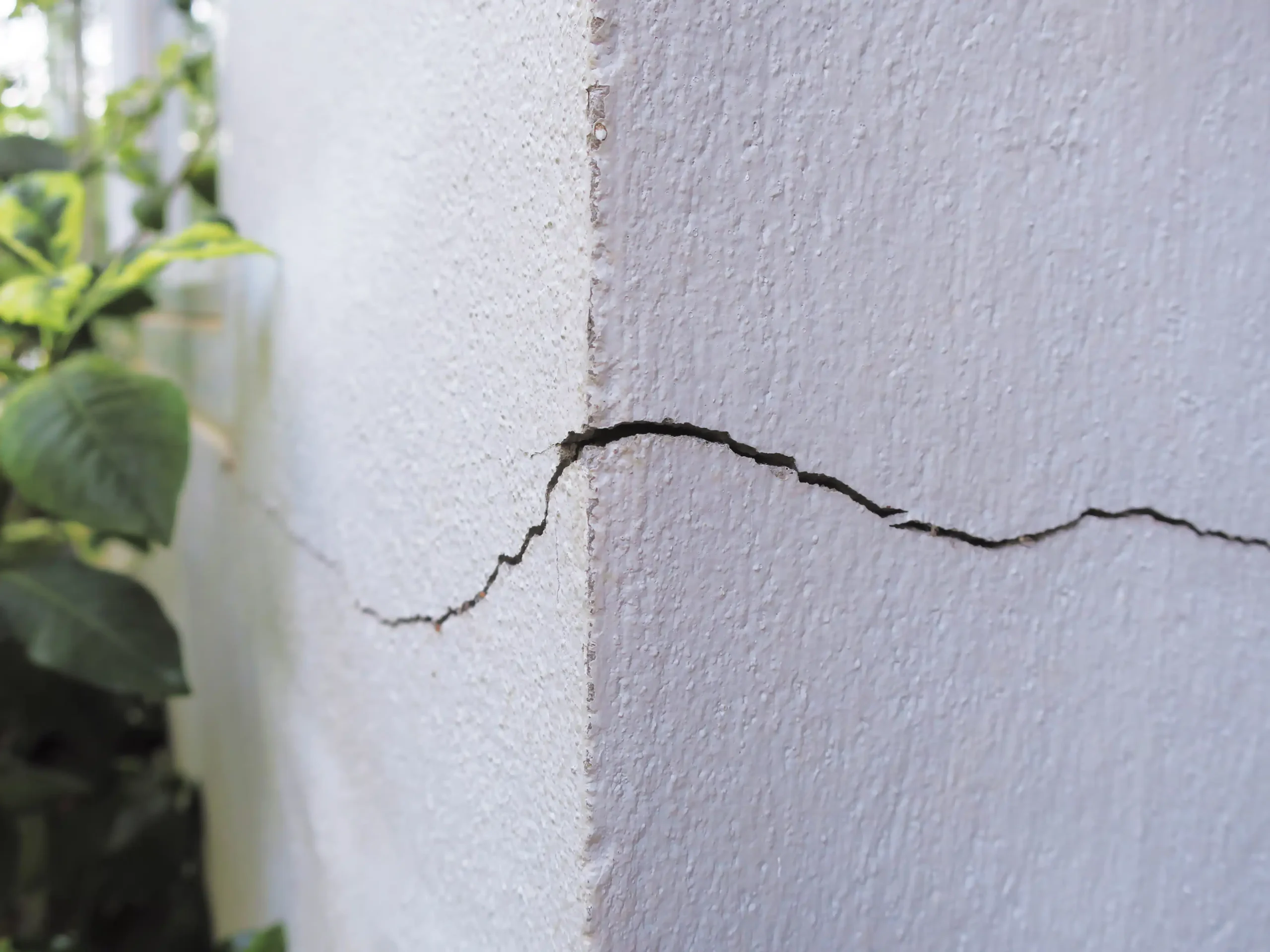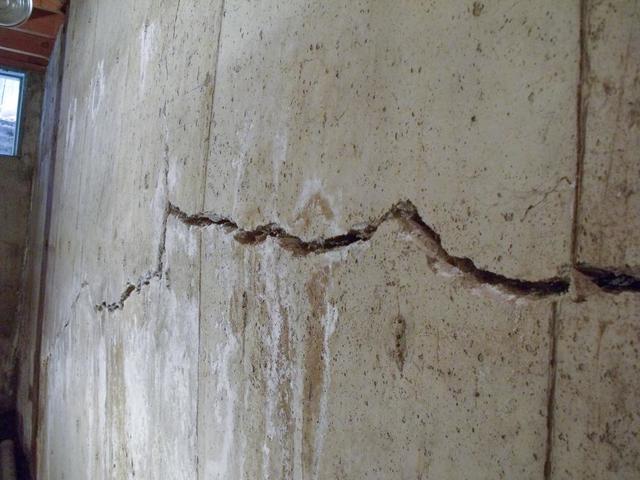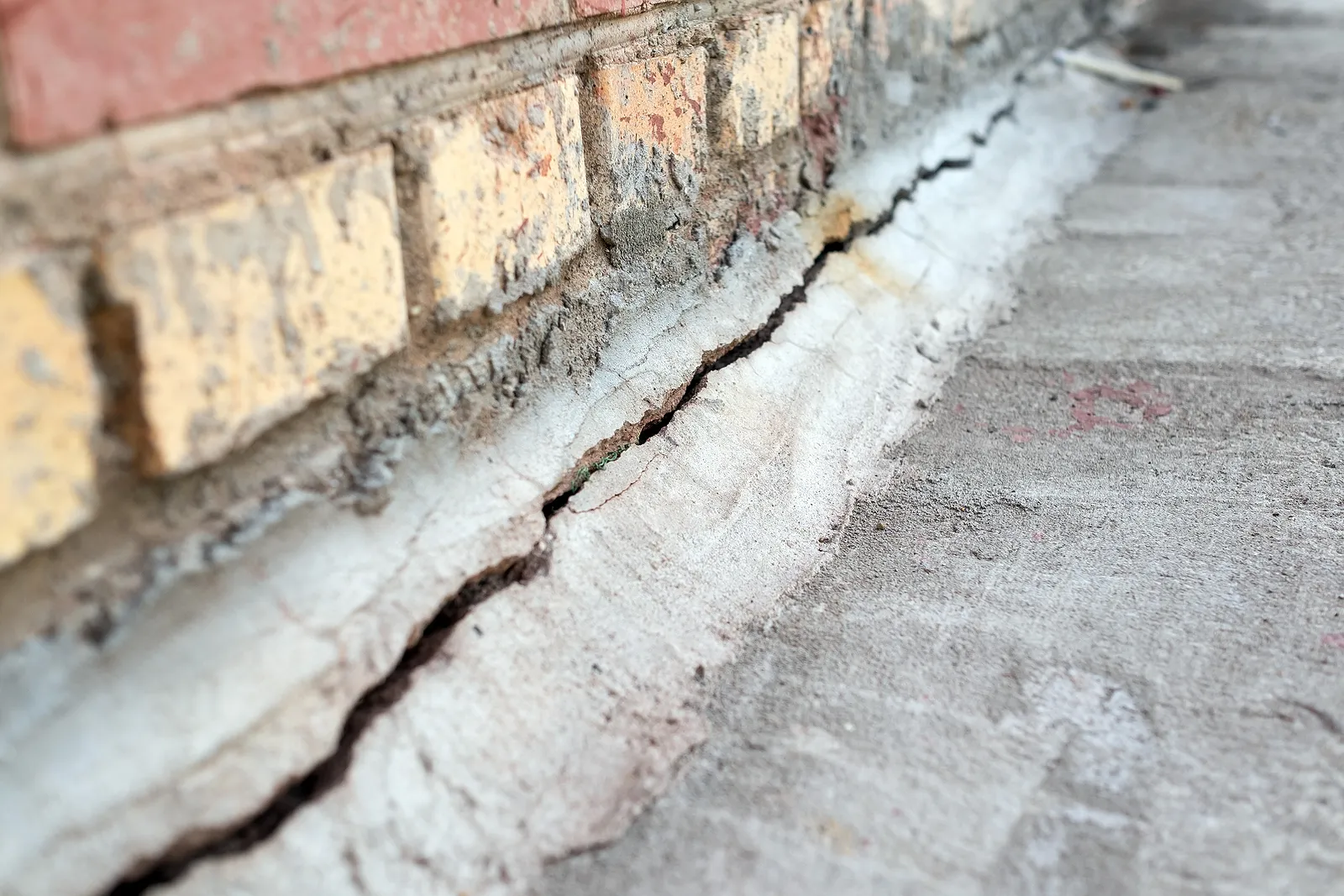
15 Feb How To Fix A Foundation Crack: Expert Guide from AquaGuard
Foundation cracks can cause concerns for homeowners, as they may indicate underlying issues that could compromise the structural integrity of a house. Understanding the cracks and their causes is crucial in determining the appropriate action. Moreover, assessing the severity of the crack and knowing when to ask for a professional’s help are vital steps in ensuring your home’s long-term stability.
In this expert guide from AquaGuard, we will delve into the essentials of how to fix a foundation crack.
Understand Foundation Cracks
Understanding the different types of foundation cracks is vital for homeowners as it helps distinguish between minor issues and those that might indicate more severe structural problems.
- Tiny Cracks (Hairline): These are the most common and usually show up a few days or weeks after a new foundation is built. They happen because the concrete or mortar is drying out. However, it is not something to worry about.
- Up-and-Down Cracks (Vertical): Typically resulting from shifts in groundwater pressure due to soil contracting and expanding. Unless water seeps in, the crack is getting wider, or many cracks are accompanied by wall bending, it is usually not a cause for concern.
- Side-to-Side Cracks (Horizontal): These types of foundation cracks indicate that there may be big issues within the structure caused by significant groundwater and soil pressure. It is important to get a professional to check it out right away.
- Stairs-like Cracks (Stair-step): If the cracks resemble a set of stairs, they are usually not a big deal. But if they show up with other problems, such as parts of the house not being level, it might mean there’s a more serious issue.
Moving on to common causes of foundation cracks. Soil movement can exert pressure on the foundation, whether due to expansion, contraction, or shifting. Water damage from leaks, poor drainage, or excessive moisture can weaken the foundation over time, contributing to crack development. Poorly executed construction practices, such as inadequate reinforcement or substandard materials, may also form foundation cracks.

Assess the Severity of the Crack
Before understanding how to fix a foundation crack, a homeowner should assess the characteristics that differentiate structural from cosmetic cracks. These characteristics include type, size, location, and progression. Hairline cracks may not be alarming, but branching out irregular patterns or locations near corners may indicate more significant issues. Also, assess whether the crack grows over time, as this could signal an ongoing problem.
Suppose a crack is accompanied by other signs like doors and windows sticking or uneven floors. In that case, it might indicate a more severe structural problem. Pay attention to any changes in the appearance of the crack or the surrounding areas, as these could provide valuable insights into the underlying issue.
Certain warning signs should prompt immediate professional evaluation. These include cracks wider than ¼ inch doors or windows that no longer close properly or noticeable shifts in the foundation. If you observe these signs, seeking expert advice is crucial to prevent further damage.
How to Fix a Foundation Crack
Repairing Minor, Non-Structural Foundation Cracks
For those of you who wonder how to fix a foundation crack that is minor and non-structural, there are effective DIY solutions available to tackle this issue before it escalates. Taking prompt action prevents further damage and ensures the long-term stability of your home’s foundation.
Materials & Tools
Before diving into your DIY project, ensure you have all the necessary materials and tools ready:
- Epoxy or Polyurethane Injection Systems: These are common materials for foundation coatings, providing a durable solution against water infiltration.
- Caulking Gun: Essential for precise filler application, ensuring controlled and even distribution into the cracks.
- Hydraulic Cement: Useful for quickly patching and sealing cracks, effectively preventing water penetration through foundation cracks.
- Masonry Patching Compound: Essential for cosmetic repairs, ensuring a smooth finish and restoring the appearance of the foundation after the crack is filled.
- Wire Brush or Chisel: Use before applying filler to remove loose debris and create a clean surface that enhances the adhesion of the repair material.
- Safety Gear: Last but certainly not least, prioritize safety by wearing gloves and protective eyewear during the repair process.
Step-by-Step Guide
- Clean the crack: Remove any debris or loose material from the crack.
- Prepare the filler: Mix the epoxy or polyurethane according to the manufacturer’s instructions.
- Apply the filler: Inject the filler into the crack, ensuring it fills the entire space.
- Smooth the surface: Use a putty knife to level the filler with the surrounding foundation.

Repairing Major Foundation Cracks: AquaGuard’s Approach
In situations where professional intervention is crucial, AquaGuard employs a comprehensive process to address major foundation cracks.
1. Initial Consultation and Inspection
During the initial consultation, AquaGuard’s experts will begin with a detailed discussion to grasp your concerns and insights. Following this, a thorough inspection of the foundation is conducted to understand how to fix a foundation crack in your home by assessing damage, type of crack, size, and potential causes.
2. Repair Techniques and Solutions
Once the assessment is complete, AquaGuard utilizes advanced repair techniques and solutions. This technique may involve underpinning, where additional support is provided to the foundation, or helical piers to stabilize and lift the foundation. The method choice depends on the foundation crack’s unique characteristics and the underlying structural issues.
Prevent Future Foundation Cracks
To ensure your home’s long-term stability, understanding how to fix a foundation crack is crucial, but equally important is preventing future issues. Homeowners can take proactive measures to safeguard their foundation:
- Maintain proper drainage: Ensure water is directed away from the foundation with yard drainage systems. Also, keep your gutters, downspouts, and drainage free from debris.
- Monitor and control soil moisture: Maintain a steady level of moisture in the soil surrounding the foundation to prevent excessive expansion and contraction.
- Address plumbing leaks promptly: Any leaks should be fixed to prevent water from seeping into the foundation.
- Invest in proper landscaping: Plant trees and shrubs at a proper distance from the foundation to avoid root-related issues.
End Note
In conclusion, understanding how to fix a foundation crack is pivotal for homeowners, serving as a proactive measure to address potential structural issues. Identifying different crack types, assessing their severity, and knowing when to seek professional help are fundamental steps in maintaining your home’s long-term stability. However, the journey does not end with fixing existing cracks; it extends to preventing these issues from happening in the future.
If you are experiencing problems with structural cracks, do not hesitate to schedule an appointment with AquaGuard today! Our experts will ensure tailored solutions for your foundation’s needs.



Sorry, the comment form is closed at this time.